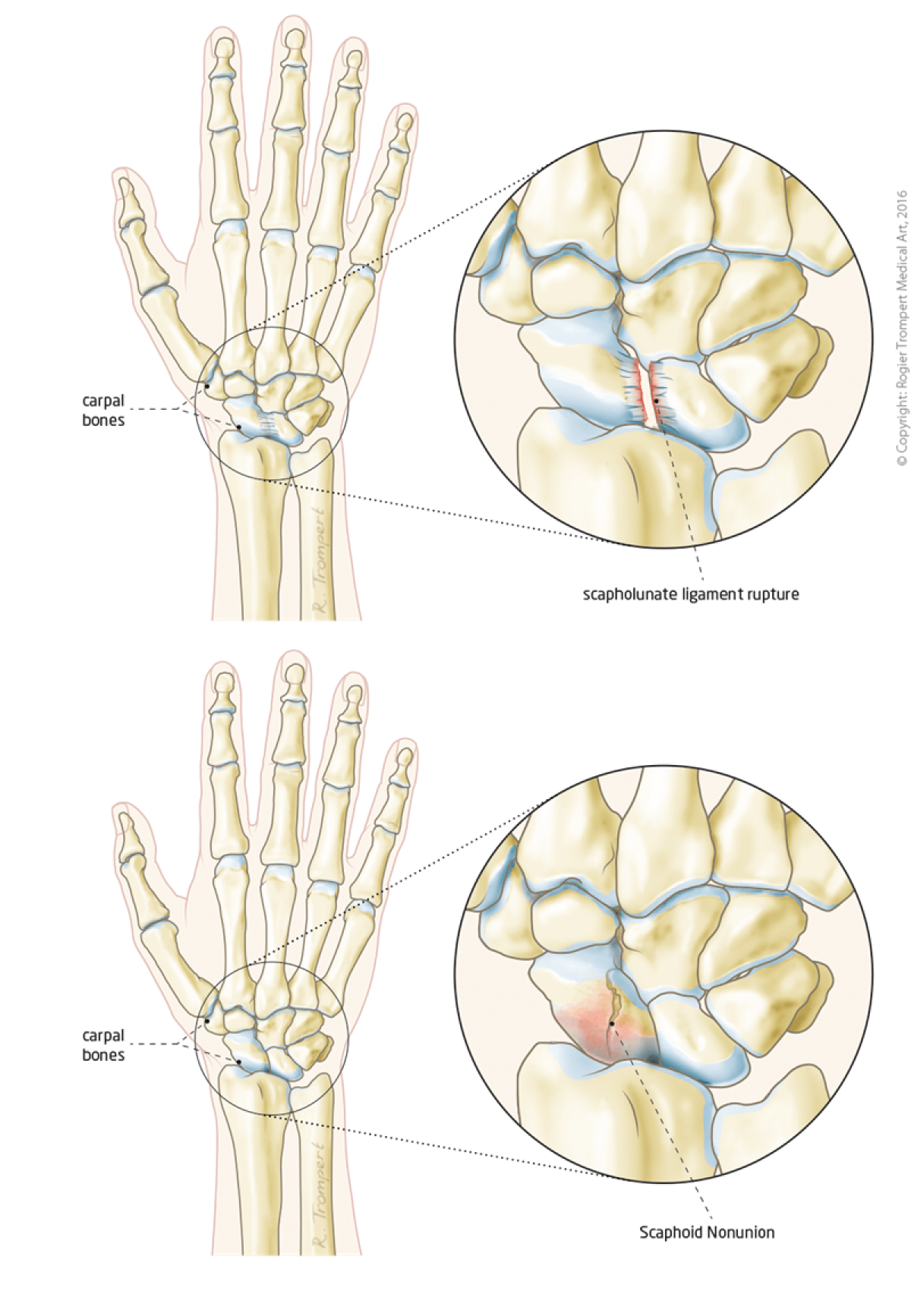What is SLAC / SNAC wrist?
The wrist joint is a complex structure that includes eight small carpal bones. Two if these bones are the scaphoid bone and the lunate bone. These bones are held together by a strong ligament called the scapholunate ligament.
Typically, a fall on an outstretched hand can cause the scapholunate ligament to tear or the scaphoid bone to break.
If the scapholunate ligament injury has been present for a while or the scaphoid bone fracture hasn’t healed, the bones of the wrist slowly collapse causing a Scapholunate Advanced Collapse (SLAC) or Scaphoid Nonunion Advanced Collapse (SNAC) wrist. This causes weakness and reduced range of motion with or without pain.

Diagnosis & treatment for SLAC / SNAC wrist
History and physical examination by a hand / wrist surgeon are the foundation of the diagnosis, but additional tests will be required. X-rays and an MRI or CT scan, or wrist arthroscopy are very useful to confirm the diagnosis.
Depending on the severity of the collapse several treatment options exist. Proximal row carpectomy(removal of three carpal bones), four-corner fusion (removal of scaphoid bone and fusion of four other carpal bones) or an alternative partial wrist fusion can all be considered.
A thorough consultation with the hand / wrist surgeon will provide you with knowledge of the advantages and disadvantages of the treatment options.
